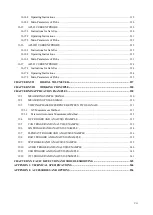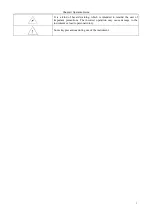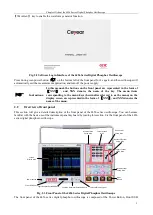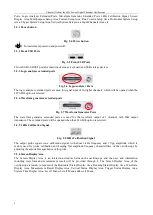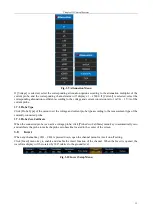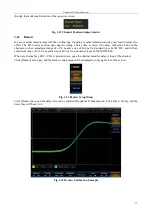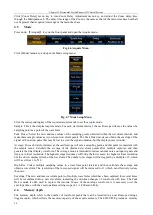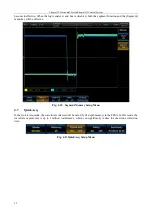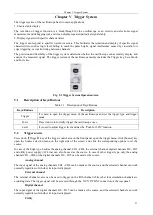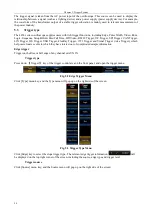
Chapter II About the 4456 Series Digital Phosphor Oscilloscope
9
18)
【
Help
】
: It is used for recall of the help file of the oscilloscope, and the help file can be recalled with this
key.
2.2.9 Run Control Setup Area
Fig. 2.12 Run Control Setup Area
The Feature Setup Area is composed of the Run/Stop, Single, Default and AutoSet keys.
1)
【
Run/Stop
】
: It is used for the continuous acquire function of the oscilloscope, including Run/Stop. Under
the running status, it can realize the continuous acquire of signals dynamically display a screen of data
captured each time; under the stop status, it can statically display the last captured screen of data, and you
can view and analyze the waveform.
2)
【
Single
】
: It is used for the single acquire function of the oscilloscope. When the corresponding trigger
channel is triggered normally, press it down to capture the acquired data of the set storage depth.
3)
【
AutoSet
】
: It is used for the automatic waveform setting of the oscilloscope. The vertical system, horizontal
system and trigger system are automatically set to get a more appropriate waveform display.
4)
【
Default
】
: It is used for the setting function of the initial status of the oscilloscope. When the machine has
an abnormal status, press down the default setting key to reset the system.
2.2.10 Horizontal System Setup Area
Fig. 2.13 Horizontal System Setup Area
The Horizontal System Setup Area is composed of the Horizontal Position Knob, Time Base Scope Knob and
Acquire Key.
1)
【
Position
】
: It is used to set the horizontal delay of the oscilloscope. Rotate it, and the trigger point of the
channel will move to the left or right by one pixel; press it down, and it will be set to 0.
2)
【
Scale
】
: It is used to set the horizontal time base of the oscilloscope. Rotate it, and the time base of the
oscilloscope will increase or decrease by one gear.
3)
【
Acquire
】
: It is used to set the acquire mode and record depth of the oscilloscope.
2.2.11 Trigger System Setup Area
Fig. 2.14 Trigger System Setup Area
Summary of Contents for 4456 Series
Page 10: ...VIII...
Page 55: ...Chapter V Trigger System 45 Fig 5 51 RF Test Signal Example...
Page 69: ...Chapter VII Mathematical Operation 59 Fig 7 10 Advanced Math Example...
Page 71: ...Chapter VIII Display System 61 Fig 8 3 Wfm Palette Menu Fig 8 4 Normal Palette...
Page 72: ...Chapter VIII Display System 62 Fig 8 5 Inverted Palette Fig 8 6 Temperature Palette...
Page 75: ...Chapter VIII Display System 65 Fig 8 12 XY Display Example...
Page 165: ...Chapter XI Protocol Analyzer Option 155 Fig 11 242 1553 Trigger and Analysis Example...





